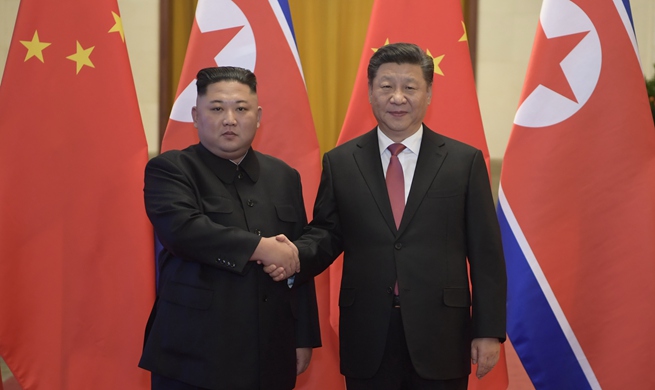BEIJING, Jan. 11 (Xinhua) -- Two Chinese coal-rich provinces of Shanxi and Heilongjiang have stepped up the development of new energy in a bid to reduce coal consumption and curb air pollution.
In Shanxi, the total installed wind and solar power generating capacities exceeded 19 GW at the end of 2018, up 30 percent year on year, according to the State Grid Shanxi Electric Power Co. Ltd.
Wind and solar power generation rose 40 percent year on year to 30.6 billion kWh last year in the country's long-time largest coal producing area.
Meanwhile, 1.12 percent of the installed wind and solar power generating capacities in the northern province were left idle in 2018, down 4.03 percentage points from the previous year.
The lower idle rate came after local authorities switched more households from coal to new energy-generated electricity for winter heating and sent more to power the economy in other regions.
Heilongjiang in China's northeast industrial heartland is also seeking to reduce its long-time reliance on coal by developing more new energy power generating capacities.
Last year, wind power generation in Heilongjiang rose 15.4 percent year on year to 12.5 billion kWh and solar power generation soared 254.1 percent to 2 billion kWh, according to the State Grid Heilongjiang Electric Power Co. Ltd.
The new energy generation helped reduce the emissions of pollutants, including carbon dioxide, by about 14.4 million tonnes, it said.
The installed wind and solar power generating capacities in Heilongjiang totaled 8.07 GW at the end of 2018, accounting for 25.8 percent of local power generating capacity.
Local authorities have also sent more new energy-generated electricity to other regions in a bid to reduce the capacity idle rate.
To reduce greenhouse gas emissions and tackle air pollution, China has been trying to use more renewable energy.
But due to higher costs, poor grid connections and the grid's preference for more predictable coal-generated power, some of the new energy generating capacity could be left idle.

















